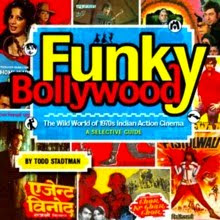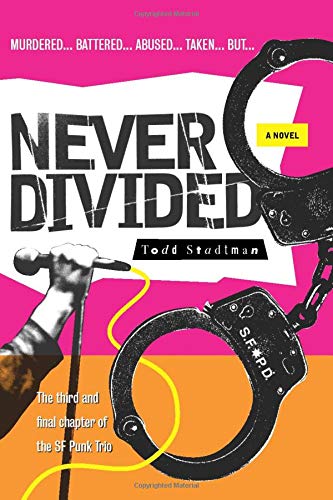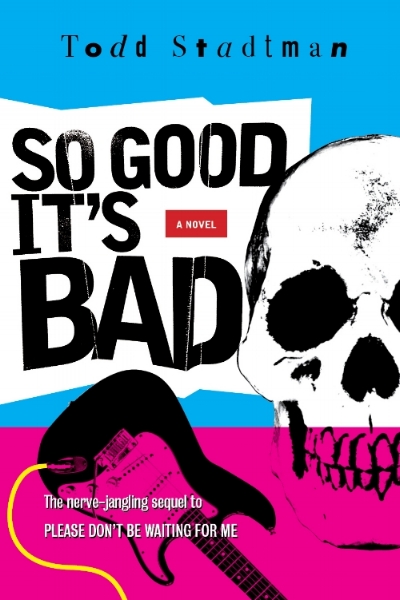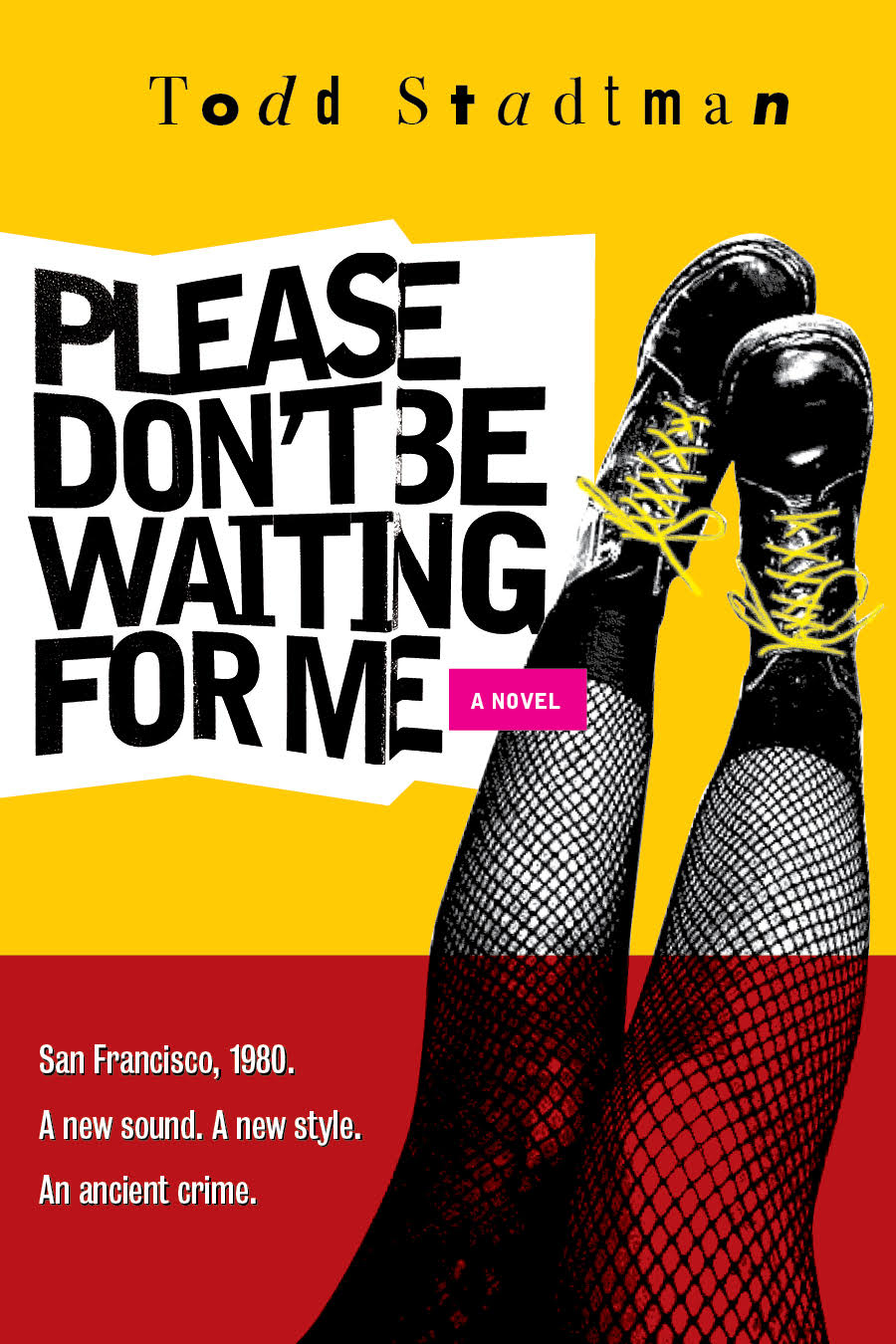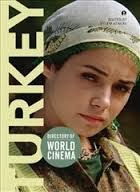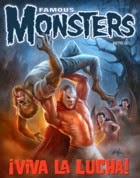The San Francisco International Asian American Film Festival came through town this week, but by the time I had finished typing out the festival’s full name, it had already ended and I had missed everything. Because its name is quite long, you see. Are you following the humor here?
But I kid, of course. I saw everything. Everything! …Well, five things. I think that there were probably more than five movies on the program, but I’ll have to check. Anyway, here’s what I saw:
The Chaser (South Korea, 2008. Dir. Na Hong-jin)
This thriller from first-time director Na Hong-jin has that uniquely South Korean quality of being able to maintain an almost unbearable level of tension while at the same time being frequently hilarious. There is comedy, pitch black and bone dry as it is, but never comic relief. Overall, the film takes me back to those heady days a few years back when it was hard to keep up with all the first rate genre films coming out of Korea – and comparisons to the best of Park Chan-wook and, especially, Bong Joon-ho's
Memories of Murder are definitely warranted.
The Chaser also appears to draw from some well-known Hollywood sources –
Silence of the Lambs and
Seven in particular – but only, it seems, for the purpose of raising some audience expectations that it will later dash with malicious enthusiasm. At this point, I wouldn’t have thought that I could imagine anything more dreary and played out than the serial killer sub-genre, but Na actually succeeds to some extent in making that old horse dance to a new tune.
In the film, Kim Yoon-suk plays Kim Jung-ho, a disgraced-cop-turned-pimp who races to find the lair of a captured serial killer – and the evidence that will tie that killer to the murder of several of Kim’s girls – before police incompetence and corruption puts him back on the street again. The character of Kim Jung-ho is fascinating precisely for how little we know about him. Na’s screenplay does us the favor of not providing him with a tidily wrapped-up back-story, and we are only given a few fleeting clues as to why, in the course of one evening, he goes from being the petty, ruthlessly self-involved figure that we see at the film’s beginning to behaving as if his very existence depended on him finding the truth and, more importantly, the killer’s latest victim, who may still be alive.
At once gritty, ultra-violent and relentless,
The Chaser is also, as indicated above, rife with mordant humor, as well as a not inconsiderable amount of genuine poignancy. These qualities combined may not make it one for the faint of heart, but for those despairing of ever again seeing South Korea produce a truly great thriller, it’s an absolute must see.
Heaven on Earth (Canada, 2008. Dir. Deepa Mehta)
If you’re one of those people who’s always wanted to see Preity Zinta getting slapped across the face repeatedly, this film may indeed be Heaven on Earth. For the rest of us, though, it might be a bit of an ordeal. In Deepa Mehta’s latest, Zinta portrays a young Punjabi woman who migrates to Canada to join a family she’s become part of through an arranged marriage. Soon the overcrowded three-generation household reveals itself to be a hotbed of dysfunction, and her husband (Vansh Bhardwaj) a rage-fuelled control freak who habitually abuses her.
Mehta has in the past presented us with the stories of women trapped in some direly oppressive circumstances, but, to my mind, never before has that presentation been so free of air and light as it is here. From the point when Zinta’s character arrives in Canada, we spend the majority of the film’s running time trapped with her in the claustrophobic confines of the family home, frozen in grim anticipation of her next inevitable beating at the hands of her husband. By the time, late in the film, when Mehta introduces some magical realist elements into the mix, I suspect that many in the audience might already be too ground down for it to register much.
For Zinta’s part, she seems to walk through the action in a state of shell shock, which – while quite believable for a character whose life has obviously not prepared her in the least for such an ordeal – doesn’t provide us much emotional entryway, with the result that our relationship to the very real-life drama transpiring onscreen becomes one of stark spectatorship. I have a lot of respect for Zinta’s performance here, but – and I realize this may peg me as being somewhat reactionary in my response to
Heaven on Earth – I have to admit that, the next night, when she popped up in a cameo in
Rab Ne Bana Di Jodi, happily boogalooing alongside Shah Rukh Khan in a colorful, 70s themed musical number, I had the feeling that all had been set right in the universe.
Fruit Fly (USA, 2009. Dir. H.P. Mendoza)
Songwriter/director/screenwriter H.P. Mendoza comes one step closer to becoming a brand name with this follow-up to
Colma: The Musical, which, like it’s predecessor, inhabits a micro-genre all its own. What to call it? The Frisco-centric gaysian (his word) bedroom musical? Time will tell, I suppose. (And, yes, I know, San Franciscans – self included –loathe the term “Frisco”, but I was looking for something catchy and easy on the tongue there.)
Mendoza, at this point, is a better songwriter than he is a filmmaker. But to say that is not to shortchange his filmmaking abilities much, since, as a songwriter, he’s world class. He writes lyrics that are clever in a way you thought lyrics just weren’t anymore. And while his songs would be plenty effective as mere vessels for his wit, he goes the extra distance by crafting melodies that are both stubbornly adhesive and frequently beautiful.
Mendoza’s songs are the glue that hold both
Colma and
Fruit Fly together – more so than in the case of other musicals, I think, because, if you were to take away Mendoza’s songs, what’s left of the films that contain them can look a bit uneven in their execution. Like
Colma,
Fruit Fly has its fair share of moments of inspired – and hilarious – invention, but also at times slips into instances of sitcom banality. In addition, it sometimes seems like the emotional journeys that Mendoza’s characters are obviously supposed to be going through are not as clearly defined for the audience as they might be in Mendoza’s head.
Still, I’m a fan. Songs aside,
Fruit Fly is infused with enough charm, sly humor and antic energy to carry us through any of its rough patches with minimal jostling, and is a markedly more assured production than its predecessor besides. I don’t know how much play these films get outside of the Bay Area, given their regional specificity, but if the answer is “not much”, then we San Franciscans are getting a real treat. Clearly Mendoza’s best work is ahead of him, but that we get to delight in these joyfully rough-edged steps he takes along the way is a privilege.
Rab Ne Bana Di Jodi (India, 2008. Dir. Aditya Chopra)
I knew that last year’s featured Bollywood film,
Om Shanti Om, was going to be hard to top, and this SRK-by-the-numbers romantic comedy certainly wasn’t the film to do it. Shah Rukh plays nerdly Surinder, who shows up at the home of a beloved teacher for the marriage-for-love of said teacher’s lovely daughter, Taani (Bollywood newbie Anushka Sharma). Surinder falls for Taani on the spot, which could be problematic, but then Taani’s beloved is killed on his way to the wedding. Yes! Unfortunately, Taani’s father then has a heart attack upon hearing the news – but it’s that kind of Bollywood heart attack that enables him to bid lengthy farewells to his loved ones and make arrangements for Surinder to marry Taani so that she won’t be left alone.
Surinder and Taani’s marriage is loveless but cordial on her part, and lovelorn and miserable on his. When Taani enrolls in a dance class – geared mostly, it seems, toward training dancers for hoochified Bollywood item numbers – Surinder sees his chance, and has his hairdresser friend give him an extreme makeover, transforming him into… hey, it’s Shah Rukh Khan! Assuming the guise of carefree and studly party animal Raj, Surinder enrolls in Taani’s class and starts to worm his way into her heart, all the while maintaining his buttoned-down identity as Surinder at home. Hilarity ensues.
Okay, some hilarity really does ensue, to be honest, and the dance class setting does provide the opportunity for some toe-tapping, if not-too-memorable, musical numbers. So
Rab Ne Bana Di Jodi wasn’t a complete waste of time. In truth, I probably would have embraced it more for the mildly engaging bit of fluff that it is had it not been my second screening of the day, occurring late on a Sunday night. In any case, I’m definitely glad I didn’t miss its central show-stopping number, a sort of mini version of
Om Shanti Om’s most self-referential moments featuring cameos by some of SRK’s most glamorous female costars – Kajol! Preity! Rani! – in a series of vignettes illustrating Bollywood’s different eras, from the Raj 50s, to the Shammi 60s, to the WTF 70s, and beyond. Unlike
OSO, however, I would have much preferred to watch this one at home, where I could have parsed out my saccharine intake by taking it in at brief intervals of my own determination.
Tokyo! (France/Japan/South Korea/Germany, 2008. Dirs. Boong Joon-Ho, Leos Carax, Michel Gondry)
This sedately odd trio of short films by Michel Gondry, Leos Carax and Joon-ho Bong is so low key that its title should perhaps have been punctuated with an ellipsis rather than an exclamation point. Contrary to that moniker’s implied enthusiasm, the tone of each of these three gaijin filmmakers’ takes on the titular metropolis seems to be one more of bemused pondering than celebration, which is perhaps appropriate.
Perhaps the best of these entries is Gondry’s, which tells the story of Hiroko and Akira, an arty young couple who arrive in Tokyo with hopes of establishing a new life. Their experiences will be familiar to anyone who made similar moves during their youth, regardless of geography – the endless couch surfing and resultant taxing of friends’ goodwill; the awful low wage jobs taken out of desperation, etc. – though each of these are exacerbated by circumstances peculiar to the city in question (for instance, Hiroko and Akira have to sleep virtually nose-to-nose with the increasingly exasperated friend who is hosting them, due to the pillbox-like scale of said friend’s miniscule one-room apartment). As often happens in these cases, the experience drives a wedge between the lovers and, as she become increasingly isolated, Hiroko (played by Ayako Fujitani, who played the psychic girl in Shusuke Kaneko’s
Gamera movies) begins to go through some bizarre, and very Gondry-esque, changes.
Unfortunately, Carax’s
Merde, which starts out strong but very quickly wears out its welcome, sits right in the middle of
Tokyo! like an impassable cinematic logjam. I think this one might have gotten a few more chuckles than it deserved from the San Francisco audience, due to the fact that its title character, a mangy sewer dweller with an oddly bohemian dress sense who emerges from the bowels of the city to terrorize and gross-out its residents, looks like every third person you see on Market Street. Following on its heels, Bong’s quietly surreal
Shaking Tokyo, the story of an obsessive compulsive shut-in and his encounter with an equally oddball pizza delivery girl, may not command the scrupulous attention it deserves, its audience having been exhausted by their struggle through the preceding entry.
Of the five movies I saw at SFIAAFF,
Tokyo! inhabits the exact middle-ground. It’s a movie that’s very hard to be passionate about, though there’s enough of interest there that I would not
not recommend it. However, I might suggest that you wait for its arrival on DVD, because, like many anthology films, it seems like exactly the type of thing that the fast forward button was invented for.
 The numerous international co-productions that Hong Kong’s Shaw Brothers studio involved themselves in may not have resulted in many actually good motion pictures, but they certainly provided for some interesting juxtapositions. In 1974’s Supermen Against The Orient, for example, they result in us seeing the type of prodigiously mustached and bountifully blow-dried macho Mediterraneans you’d see in the typical Italian police thriller of the era running around on Shaw’s familiar Movie Town sets with the likes of Lo Lieh and Shih Szu. And to this I can only exclaim: “Hey, you got your cheesy 1970s Italian action movie in my classic SB martial arts film!” Now, whether these are two tastes that taste great together is another matter entirely.
The numerous international co-productions that Hong Kong’s Shaw Brothers studio involved themselves in may not have resulted in many actually good motion pictures, but they certainly provided for some interesting juxtapositions. In 1974’s Supermen Against The Orient, for example, they result in us seeing the type of prodigiously mustached and bountifully blow-dried macho Mediterraneans you’d see in the typical Italian police thriller of the era running around on Shaw’s familiar Movie Town sets with the likes of Lo Lieh and Shih Szu. And to this I can only exclaim: “Hey, you got your cheesy 1970s Italian action movie in my classic SB martial arts film!” Now, whether these are two tastes that taste great together is another matter entirely. Back in December, as part of my Italian Superhero Roll Call series, I reviewed the first of the Three Fantastic Supermen films, a long-running franchise of which Supermen Against The Orient is one subsequent part. While the debut entry featured Kommissar X’s Brad Harris and Tony Kendall in the leads, this one features a character by the name of Robert Malcolm, along with another named Antonio Cantafora and stuntman Sal Borgese (the lone constant in the Supermen films) in the titular roles. This was the Supermen film designed to cash in on the then red-hot kung fu craze, and the participation of Shaw guarantees, not only the presence of some familiar kung fu faces, but also action choreography that’s a cut well above that of most strictly Western passes at the genre.
Back in December, as part of my Italian Superhero Roll Call series, I reviewed the first of the Three Fantastic Supermen films, a long-running franchise of which Supermen Against The Orient is one subsequent part. While the debut entry featured Kommissar X’s Brad Harris and Tony Kendall in the leads, this one features a character by the name of Robert Malcolm, along with another named Antonio Cantafora and stuntman Sal Borgese (the lone constant in the Supermen films) in the titular roles. This was the Supermen film designed to cash in on the then red-hot kung fu craze, and the participation of Shaw guarantees, not only the presence of some familiar kung fu faces, but also action choreography that’s a cut well above that of most strictly Western passes at the genre. Malcolm here plays FBI agent Robert Wallace, who is dispatched to Asia in order to locate six American agents who have been captured by the drug lord Chen Lo (Tung Lam). Wallace’s job doesn’t end up involving much in the way of investigation, this being the type of movie whose lazy plotting insures he need only sit in a darkened bar or nightclub long enough for some mysterious figure to surreptitiously hand him a note detailing exactly what he needs to do next. It is by this means that a completely superfluous travelogue sequence shot in Thailand is brought to a close, with Wallace jetting off to Hong Kong to meet with a kung fu master by the name of Tang (Lo Lieh). It turns out that two of Tang’s students are Max (Cantafora) and Jerry (Borgese), a pair of professional burglars who are old friends of Wallace’s -- though how such a relationship got skipped over during Wallace’s FBI screening I can’t imagine.
Malcolm here plays FBI agent Robert Wallace, who is dispatched to Asia in order to locate six American agents who have been captured by the drug lord Chen Lo (Tung Lam). Wallace’s job doesn’t end up involving much in the way of investigation, this being the type of movie whose lazy plotting insures he need only sit in a darkened bar or nightclub long enough for some mysterious figure to surreptitiously hand him a note detailing exactly what he needs to do next. It is by this means that a completely superfluous travelogue sequence shot in Thailand is brought to a close, with Wallace jetting off to Hong Kong to meet with a kung fu master by the name of Tang (Lo Lieh). It turns out that two of Tang’s students are Max (Cantafora) and Jerry (Borgese), a pair of professional burglars who are old friends of Wallace’s -- though how such a relationship got skipped over during Wallace’s FBI screening I can’t imagine. Predictably, Wallace ends up recruiting his two old pals to help him with his mission, less predictably promising to help them rob the safe at the American consulate in return. Under Tang’s tutelage, they begin to train for their coming confrontation with Chen Lo, a regime that involves much plunging of their extremities into braziers full of hot coals... and really not that much else, now that I think of it. (Don’t try this at home, aspiring kung fu masters.) Tang and his associate Lilly (Shih Szu) are ultimately revealed to be law enforcement agents themselves, and when the day of reckoning arrives, they too join in on the fun. It is at this point that Wallace produces his secret weapon, the bright red super suits we saw in the first film, which make their wearers indestructible. This time around there are enough suits available for Lo Lieh and Shih Szu to also wear them, and if I don’t say that this is probably the most ridiculous that Lo Lieh has ever looked, it is only because I am thinking of him riding around on that shark-launching palanquin in Zodiac Fighters.
Predictably, Wallace ends up recruiting his two old pals to help him with his mission, less predictably promising to help them rob the safe at the American consulate in return. Under Tang’s tutelage, they begin to train for their coming confrontation with Chen Lo, a regime that involves much plunging of their extremities into braziers full of hot coals... and really not that much else, now that I think of it. (Don’t try this at home, aspiring kung fu masters.) Tang and his associate Lilly (Shih Szu) are ultimately revealed to be law enforcement agents themselves, and when the day of reckoning arrives, they too join in on the fun. It is at this point that Wallace produces his secret weapon, the bright red super suits we saw in the first film, which make their wearers indestructible. This time around there are enough suits available for Lo Lieh and Shih Szu to also wear them, and if I don’t say that this is probably the most ridiculous that Lo Lieh has ever looked, it is only because I am thinking of him riding around on that shark-launching palanquin in Zodiac Fighters. I have to admit to finding the Three Fantastic Supermen films somewhat mysterious. Their sheer abundance seems to indicate that they were popular, though the basis of their popularity is hard to guess at. It certainly wasn’t star driven, since, aside from Borgese, they seldom featured the same leads from one entry to the next. Perhaps, then, it was the series’ central concept of normal men being rendered indestructible via the donning of super suits -- though, if it was, it’s hard to see why an installment like Supermen Against The Orient would give that concept such conspicuously short shrift, only having its heroes don those super suits during the movie’s final minutes.
I have to admit to finding the Three Fantastic Supermen films somewhat mysterious. Their sheer abundance seems to indicate that they were popular, though the basis of their popularity is hard to guess at. It certainly wasn’t star driven, since, aside from Borgese, they seldom featured the same leads from one entry to the next. Perhaps, then, it was the series’ central concept of normal men being rendered indestructible via the donning of super suits -- though, if it was, it’s hard to see why an installment like Supermen Against The Orient would give that concept such conspicuously short shrift, only having its heroes don those super suits during the movie’s final minutes. It’s also a possibility that the serial replication of these films is the result less of audience demand than of the Italian film industry of the era simply turning its tendency to carbon copy back upon itself. In any case, I have to say that, to my tastes, the Three Fantastic Supermen series is not one that ages particularly well. While the abundance of swinging sixties style evident in the first film charmed me enough to make all the broad slapstick go down with relative ease, the mid 1970s, with all of its ugly clothes, music and design offers little by way of mitigation.
It’s also a possibility that the serial replication of these films is the result less of audience demand than of the Italian film industry of the era simply turning its tendency to carbon copy back upon itself. In any case, I have to say that, to my tastes, the Three Fantastic Supermen series is not one that ages particularly well. While the abundance of swinging sixties style evident in the first film charmed me enough to make all the broad slapstick go down with relative ease, the mid 1970s, with all of its ugly clothes, music and design offers little by way of mitigation. Not surprisingly, it is those parts of Supermen Against The Orient that most look like a Shaw Brothers film that end up being the most enjoyable -- for one thing because the familiar stars and surroundings bring back memories of countless other, much better films, but also because, thanks to the participation of Shaw’s fight choreographers, the action is fairly snappy and well staged. Sadly, in the spaces between, what we are most likely to find are repetitive comic relief sequences involving either Jacques Dufilho as a fey and high-strung American ambassador – sequences that include Nixon references that are seemingly intended to be funny merely by virtue of them being Nixon references – or Sal Borgese’s character Jerry.
Not surprisingly, it is those parts of Supermen Against The Orient that most look like a Shaw Brothers film that end up being the most enjoyable -- for one thing because the familiar stars and surroundings bring back memories of countless other, much better films, but also because, thanks to the participation of Shaw’s fight choreographers, the action is fairly snappy and well staged. Sadly, in the spaces between, what we are most likely to find are repetitive comic relief sequences involving either Jacques Dufilho as a fey and high-strung American ambassador – sequences that include Nixon references that are seemingly intended to be funny merely by virtue of them being Nixon references – or Sal Borgese’s character Jerry. As with Borgese’s character in the first film, Jerry is portrayed as a jabbering deaf-mute idiot -- and with a degree of sensitivity that should prove just as offensive to self-respecting idiots as to the hearing impaired. Still, given that the comedy in the Shaw Brothers’ films was itself not always of the most sophisticated variety, I guess it would be unfair for me to single out the Italians for censure in this regard. Nonetheless, it is not hard to suspect that it is in these aforementioned comedic scenes that writer/director Bitto Albertini – he of the unrelated Goldface, the Fantastic Superman and the even more unrelated Black Emanuelle – had the most free hand.
As with Borgese’s character in the first film, Jerry is portrayed as a jabbering deaf-mute idiot -- and with a degree of sensitivity that should prove just as offensive to self-respecting idiots as to the hearing impaired. Still, given that the comedy in the Shaw Brothers’ films was itself not always of the most sophisticated variety, I guess it would be unfair for me to single out the Italians for censure in this regard. Nonetheless, it is not hard to suspect that it is in these aforementioned comedic scenes that writer/director Bitto Albertini – he of the unrelated Goldface, the Fantastic Superman and the even more unrelated Black Emanuelle – had the most free hand. The final thing that I need to report to you about Supermen Against The Orient is that it has a theme song which is astonishing in its awfulness. I’m still undecided as to whether this is a strike against or in favor of the movie, because the truth is that, if I had the song on my iPod, I would most likely keep it on constant repeat, due to the fact that even multiple consecutive listenings would leave me in a state of stunned disbelief as to just how horrible it is. Given it’s one of those Italian movie themes that’s sung in English by a vocalist who doesn’t sound like he’s too familiar with the language, it’s difficult to make most of the lines out, but one of them is “I cream ‘em and ream ‘em, and then I redeem ‘em.” If the rest of Supermen Against The Orient had lived down to this level of badness, it might indeed have been something truly noteworthy. But, as is, it neither creamed nor redeemed me. Although it might have reamed me just a little bit
The final thing that I need to report to you about Supermen Against The Orient is that it has a theme song which is astonishing in its awfulness. I’m still undecided as to whether this is a strike against or in favor of the movie, because the truth is that, if I had the song on my iPod, I would most likely keep it on constant repeat, due to the fact that even multiple consecutive listenings would leave me in a state of stunned disbelief as to just how horrible it is. Given it’s one of those Italian movie themes that’s sung in English by a vocalist who doesn’t sound like he’s too familiar with the language, it’s difficult to make most of the lines out, but one of them is “I cream ‘em and ream ‘em, and then I redeem ‘em.” If the rest of Supermen Against The Orient had lived down to this level of badness, it might indeed have been something truly noteworthy. But, as is, it neither creamed nor redeemed me. Although it might have reamed me just a little bit











































